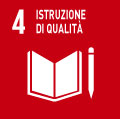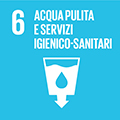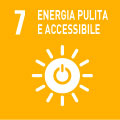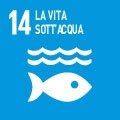- Docente: Renata Archetti
- Crediti formativi: 6
- SSD: ICAR/01
- Lingua di insegnamento: Inglese
- Moduli: Renata Archetti (Modulo 1) Renata Archetti (Modulo 2)
- Modalità didattica: Convenzionale - Lezioni in presenza (Modulo 1) Convenzionale - Lezioni in presenza (Modulo 2)
- Campus: Bologna
-
Corso:
Laurea Magistrale in
Civil Engineering (cod. 8895)
Valido anche per Campus di Ravenna
Laurea Magistrale in Offshore engineering for energy transition (cod. 6056)
Laurea Magistrale in Civil Engineering (cod. 8895)
Campus di Ravenna
Laurea Magistrale in Offshore Engineering (cod. 9249)
Campus di Ravenna
Laurea Magistrale in Offshore Engineering (cod. 9249)
Campus di Ravenna
Laurea Magistrale in Offshore Engineering (cod. 9249)
Campus di Ravenna
Laurea Magistrale in Offshore Engineering (cod. 9249)
-
Orario delle lezioni (Modulo 1)
dal 23/09/2024 al 08/10/2024
-
Orario delle lezioni (Modulo 2)
dal 12/11/2024 al 16/12/2024
Conoscenze e abilità da conseguire
Lo studente al termine del corso è in grado di gestire e classificare un tratto di costa, proporre soluzioni ‘nature based’ per il suo mantenimento e la sua difesa da eventi naturali ed antropici (mareggiate, inquinamento marino, intrusione salina...) anche nell’ottica dei futuri cambiamenti climatici. Lo studente al termine del corso è, inoltre, in grado di stimare la risorsa energetica in mare da diverse fonti e di proporre soluzioni per la loro conversione ed utilizzo.
Contenuti
The course will introduce and describe the processes that characterize the oceanic environment, as wind, tide, wave and currents, their loads and interaction with the structures, the assessment of the marine renewable energy (currents and waves) and basics on the devices typologies.
The course is organized in 3 parts:
Part 1 The sea environment 3 CFU
Part 2 Ocean Engineering 3 CFU
Part 3 Marine renewable energy 3CFU
1.The Sea environment 3 CFU
-Wind. The geostrophic approximation. Geostrophic wind. Measure of the wind. Force of the wind on the structures.
Exercise on the geostrophic wind estimation
-Sea water Level: astronomic tides, storme surges.
Currents.
-Sea Wave. Linear Theory. Dispersion relationship. Shallow water and deep water approximation.
Matlab exercises on the linear wave theory and superposition of waves
-Irregular waves- Wave statistics, wave spectra
Non-linear theory of waves
Wave transformation from offshore to onshore: shoaling-refraction -diffraction
Tsunamis
Exercise on the ocean environment with SWAN
Exercise on the Extreme waves conditions
2. Ocean engineering Sea –Structures Interactions
Interaction of currents with marine structures
Interaction of waves with marine structures: The calculation of forces on ocean structures:
-Structural element much smaller than wavelength – drag and inertia forces.
Morrison equation
Exercise: Estimation of forces on a pole using the Morrison equation
-Structural element comparable with wavelength – diffraction forces.
Application: Estimation of wave forces on a fixed structures
Floating Structures: Wave forces & motions theory
i.e. Floating breakwaters, floating docks, Offshore TLP Sparbuoys,
Exercises on the modeling of a floating body with an open source potential model (WEC-SIM)
3. Marine renewable energy
Renewable energy demand
Renewable energy from the offshore wind and from the sea: the actual numbers
Marine renewable energy resources, Principles of energy conversion from the sea:
- Waves;
- Tidal Range (tidal rise and fall),;
- Tidal Currents,;
- Ocean Currents, derived from wind-driven and thermohaline ocean circulation;
- Ocean Thermal Energy Conversion (OTEC);
- Salinity Gradients (osmotic power);
Wave Energy conversion (WEC) typologies;
Sea Current turbines.
Testi/Bibliografia
R.G. Dean & R.A. Dalrymple, Water wave mechanics for engineers and scientists, Adv. Series on Ocean Engineering – vol. 2, World Scientific
Materiale verrà distribuito durante il corso.
Metodi didattici
The teaching methods could be modify based on the COVID19 situation.
Please check my web page during the year.
The course is taught through lectures. Part of them are dedicated to the solution of practical problems, that will be developed at the computer.
Exercises with practical activities (i.e. computer programming and use of specific software) using Matlab and excel:
- statistics of extreme waves;
- dispersion relationship for evaluating wave transformation from off-shore to in-shore;
- reconstruction of the typical annual wave climate;
-Design of an ocean structure;
- Design of a point absorber.
Some lessons will be held by well known professionists in the research and design of coastal and ocean structures.
Modalità di verifica e valutazione dell'apprendimento
The student will prepare for the exam a report of the exercises and simple application design that were developed during the course.
The preparation of the student will be assessed through an oral colloquium whose duration is about 30 minutes.
Higher grades will be awarded to students who demonstrate an outstanding understanding of the subject, a high ability for critical application, and a clear and concise presentation of the contents.
To obtain a passing grade, students are required to at least demonstrate a knowledge of the key concepts of the subject, some ability for critical application, and a comprehensible use of technical language .
A failing grade will be awarded if the student shows knowledge gaps in key-concepts of the subject, inappropriate use of language, and/or logic failures in the analysis of the subject.
Orario di ricevimento
Consulta il sito web di Renata Archetti
SDGs




L'insegnamento contribuisce al perseguimento degli Obiettivi di Sviluppo Sostenibile dell'Agenda 2030 dell'ONU.
